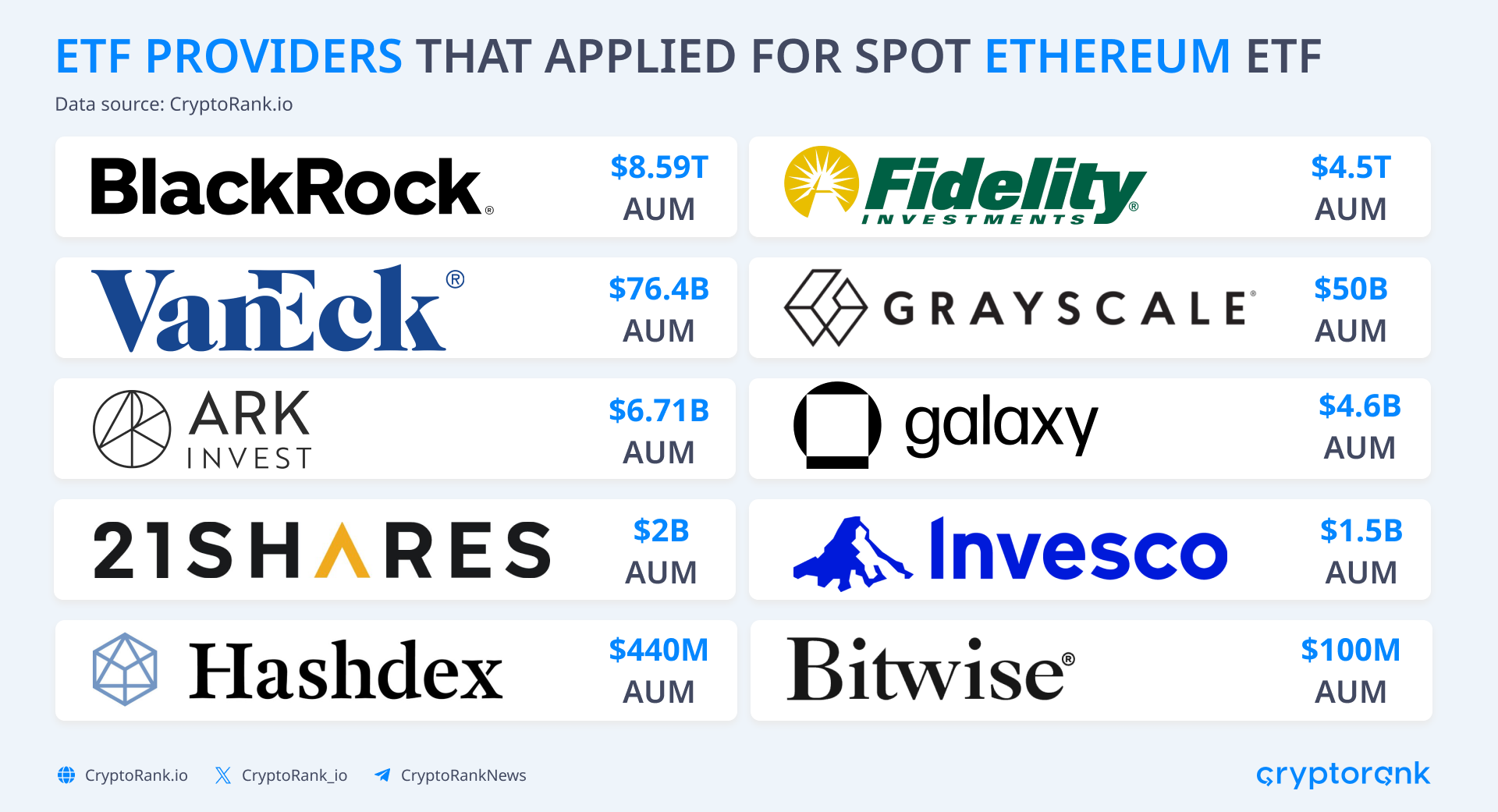Bitcoin Ethereum Spot Etf Revolutionizing Investments
Bitcoin ethereum spot etf sets the stage for this enthralling narrative, offering readers a glimpse into a story that is rich in detail. These investment vehicles are carving out a significant space within the cryptocurrency landscape, providing a bridge for investors seeking to tap into the growing market of digital assets.
This intriguing exploration begins with a foundational understanding of Bitcoin and Ethereum, two of the most recognized cryptocurrencies, highlighting their distinct technological innovations and the unique uses they serve. As we delve deeper, we’ll unpack how ETFs, particularly spot ETFs, are structured, and why they matter in the context of cryptocurrency investments.
Introduction to Bitcoin and Ethereum

Bitcoin and Ethereum are the two most prominent cryptocurrencies that have revolutionized the financial landscape. Bitcoin, introduced in 2009 by an anonymous person or group known as Satoshi Nakamoto, was the first decentralized digital currency, enabling peer-to-peer transactions without the need for intermediaries. Ethereum, launched in 2015 by Vitalik Buterin and others, introduced smart contracts, allowing developers to create decentralized applications on its blockchain.
While Bitcoin primarily serves as a store of value and a medium of exchange, Ethereum's technology facilitates complex transactions and applications, making it more versatile. Historically, Bitcoin has seen significant price volatility but remains the market leader in capitalization, whereas Ethereum has carved its niche by enabling decentralized finance (DeFi) and non-fungible tokens (NFTs). The evolution of both cryptocurrencies reflects their distinct purposes and technological advancements, shaping their respective markets.
Understanding ETFs and Spot ETFs

Exchange-Traded Funds (ETFs) are investment funds that are traded on stock exchanges, much like individual stocks. They are designed to track the performance of a specific index, commodity, or asset class, allowing investors to diversify their portfolios without needing to buy individual assets directly. Spot ETFs differ from traditional ETFs in that they invest directly in the underlying assets, rather than derivatives.
This distinction is crucial in the context of cryptocurrencies, where spot ETFs provide exposure to the actual assets, enhancing transparency and security. Asset-backed ETFs, particularly in the crypto space, hold physical or digital assets, thereby offering a more reliable investment vehicle for cryptocurrencies, such as Bitcoin and Ethereum.
The Emergence of Bitcoin and Ethereum Spot ETFs
Recent developments indicate a growing momentum in the approval of Bitcoin and Ethereum spot ETFs. Regulatory bodies, particularly the U.S. Securities and Exchange Commission (SEC), have been evaluating applications for such financial products, which could lead to broader institutional adoption. As institutions express interest in entering the cryptocurrency market, they play a vital role in launching these products. By aligning with regulatory requirements, institutions can foster a more stable investment environment, enhancing public confidence in cryptocurrency investments.
Advantages of Bitcoin and Ethereum Spot ETFs
Investing in Bitcoin and Ethereum spot ETFs offers several advantages to investors. Firstly, these ETFs provide a simple and efficient way to gain exposure to cryptocurrencies without the complexities of managing digital wallets or private keys. This accessibility makes them attractive for retail investors who may be hesitant to invest directly in crypto markets.Another benefit is the potential for increased market liquidity.
Spot ETFs can lead to more trading volume and stability in the cryptocurrency market, reducing price volatility. Moreover, they can attract institutional investments, further legitimizing cryptocurrencies in the financial ecosystem.
Risks and Challenges of Bitcoin and Ethereum Spot ETFs
Despite their advantages, investing in cryptocurrency spot ETFs comes with inherent risks. The volatility of cryptocurrency prices can significantly affect the performance of these ETFs. Investors may experience rapid fluctuations in value, which can lead to losses.Additionally, regulatory challenges could impact the deployment and management of spot ETFs. Any unfavorable regulatory changes can result in operational hurdles or restrictions on trading.
Market dynamics, including liquidity issues or sudden shifts in investor sentiment, can also pose challenges that affect the ETFs' performance.
Future Outlook for Bitcoin and Ethereum Spot ETFs
The future outlook for Bitcoin and Ethereum spot ETFs appears promising as adoption continues to grow. Many analysts predict that as investor interest in cryptocurrencies increases, the demand for spot ETFs will rise correspondingly. Regulatory clarity may further enhance this trend, providing a more stable environment for cryptocurrency investments.Market trends indicate that as traditional finance integrates more with digital assets, spot ETFs could bridge the gap between the two worlds.
With the evolution of financial products, Bitcoin and Ethereum spot ETFs are anticipated to play a significant role in reshaping investment strategies.
Comparisons with Other Investment Vehicles
When comparing Bitcoin and Ethereum spot ETFs with other investment options, such as futures contracts and direct cryptocurrency purchases, it becomes clear that each approach has its unique advantages and disadvantages. Spot ETFs generally offer lower risk and greater ease of access, while futures may provide opportunities for leveraging positions but come with higher complexity and risk.
- Spot ETFs: Simplified investment, backed by actual assets, ideal for risk-averse investors.
- Futures: Opportunities for profit in rising and falling markets, but involve higher risk and require more sophisticated knowledge.
- Direct Purchases: Full ownership of cryptocurrency, but necessitates secure storage and management of private keys.
| Investment Vehicle | Fees | Risks | Liquidity |
|---|---|---|---|
| Spot ETFs | Typically lower | Moderate, depending on market volatility | High |
| Futures | Variable, can be high | High, due to leverage | Moderate |
| Direct Cryptocurrency Purchases | Transaction fees apply | High, depending on market conditions | Varies by exchange |
Last Word

In conclusion, Bitcoin and Ethereum spot ETFs are poised to reshape the investment landscape, enhancing accessibility and liquidity for both institutional and retail investors. As these products gain traction, they may facilitate wider adoption of cryptocurrencies, paving the way for an evolved financial ecosystem where digital assets play an integral role.
FAQ Compilation
What is the difference between spot ETFs and traditional ETFs?
Spot ETFs focus on the current market price of the underlying assets, while traditional ETFs may track futures or other financial instruments.
Are Bitcoin and Ethereum spot ETFs safe for investors?
While they offer easier access to cryptocurrency, investors should be aware of the volatility and risks associated with cryptocurrencies.
What are the tax implications of investing in spot ETFs?
Tax treatment can vary by jurisdiction, but generally, profits from ETFs may be subject to capital gains tax.
How do spot ETFs increase market liquidity?
By pooling investments, spot ETFs can contribute to more stable pricing and better trading volumes in the underlying cryptocurrencies.
Can retail investors easily purchase Bitcoin and Ethereum spot ETFs?
Yes, spot ETFs are designed to be accessible through traditional brokerage accounts, simplifying the investment process for retail investors.




